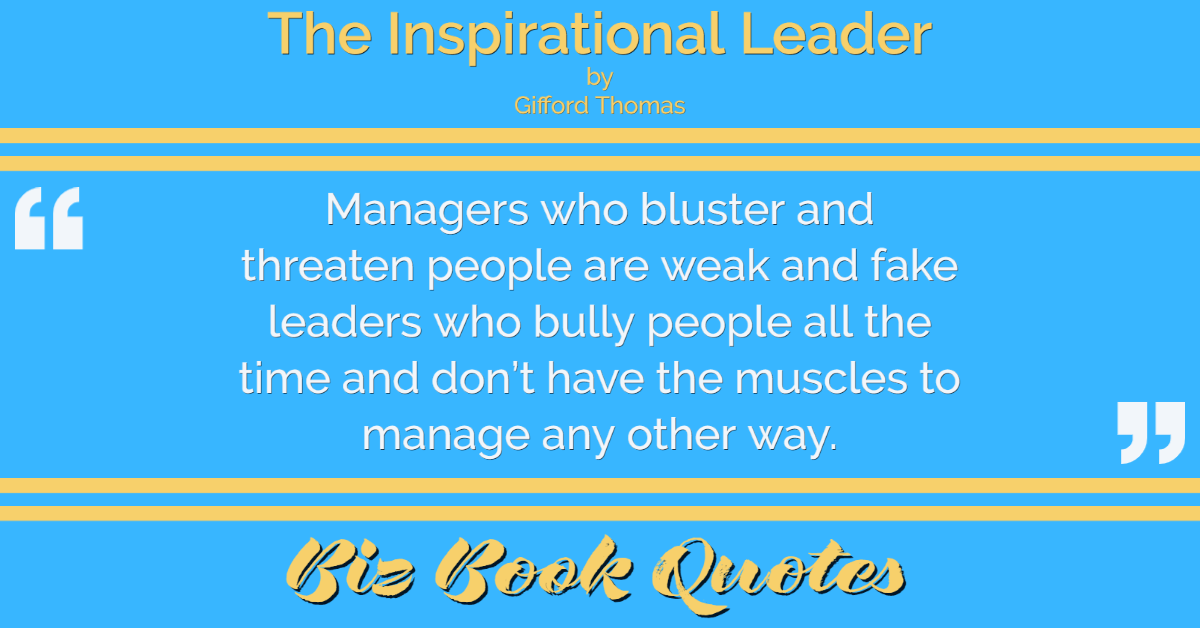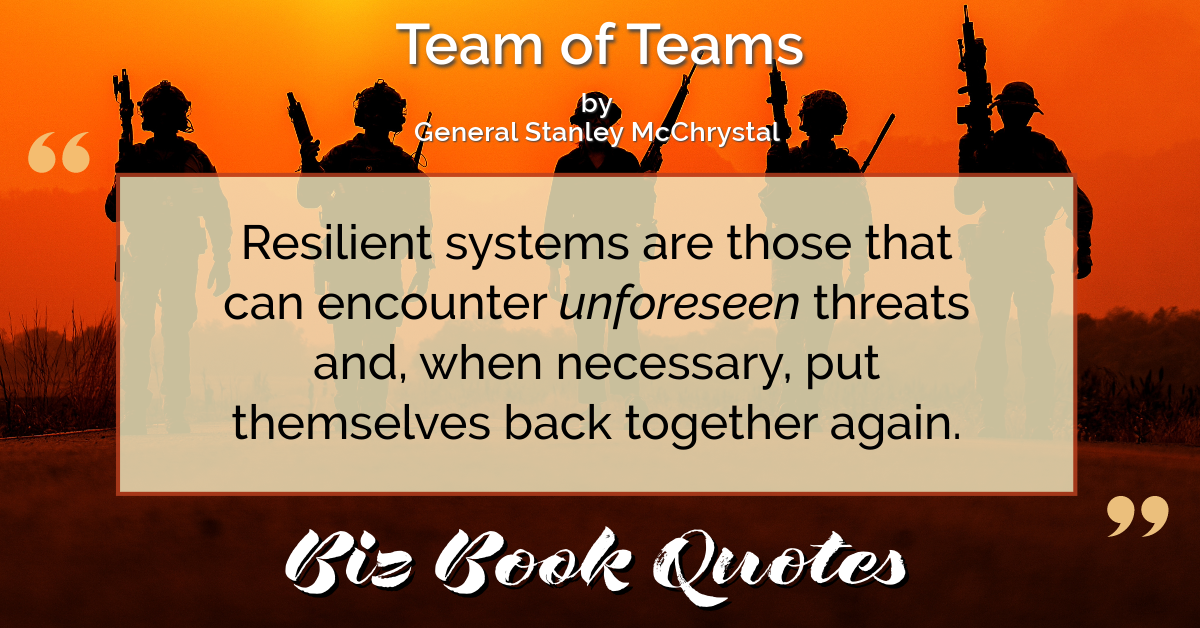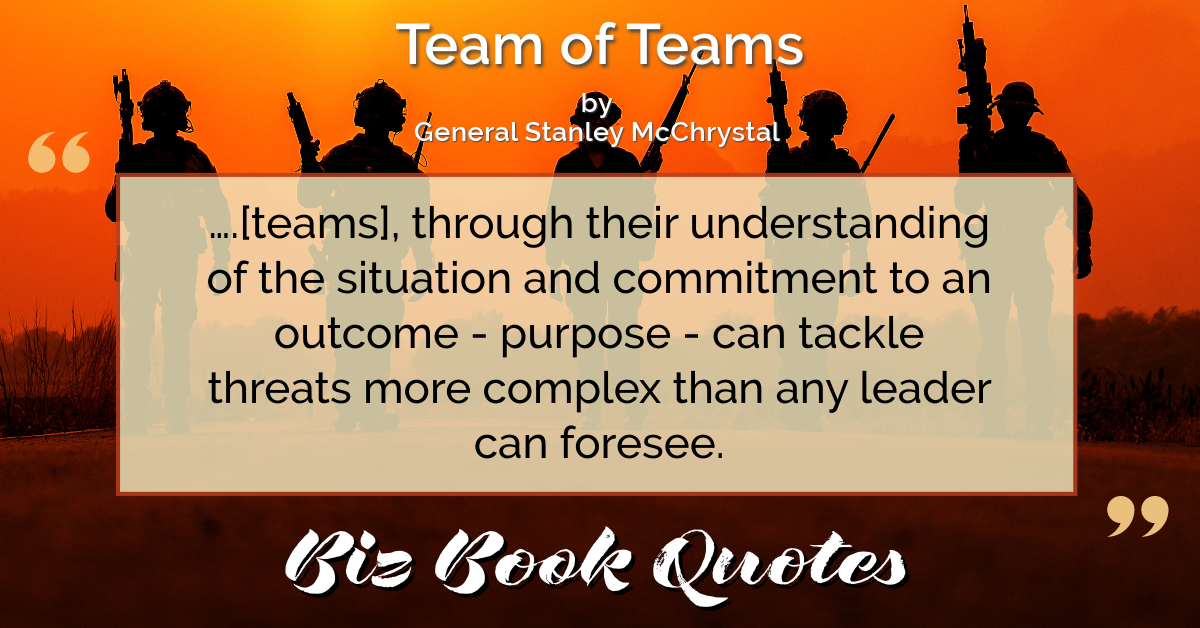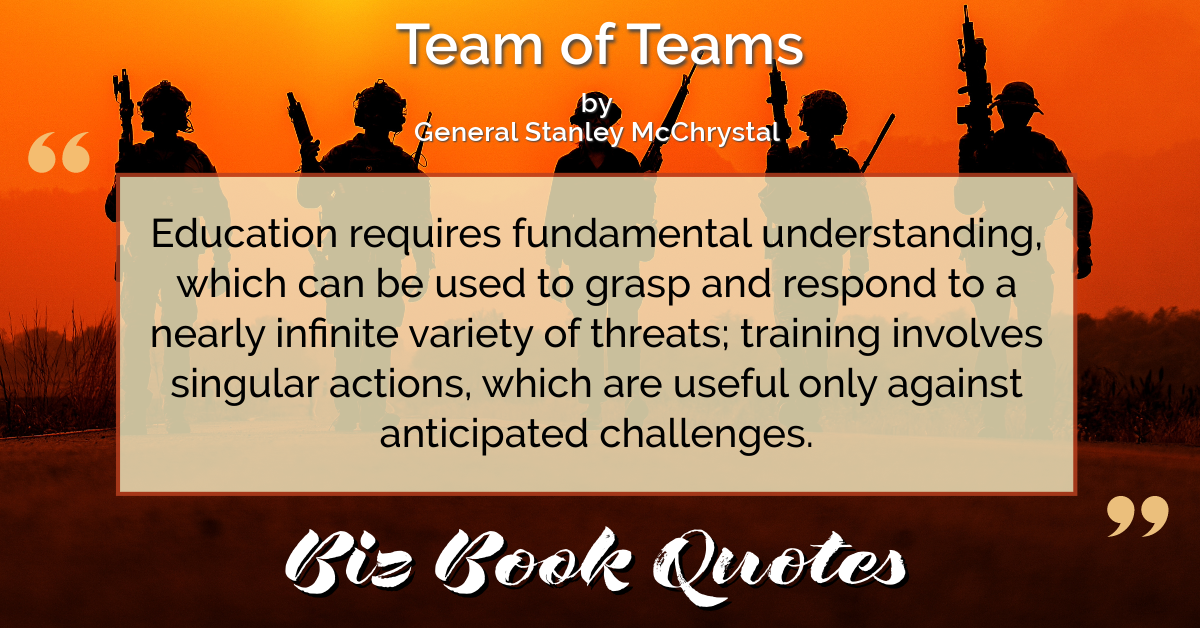 |
…if your instincts suggest that a ’10X’ improvement could make [a] capability exciting or threatening, you may very well be looking at the beginning of what is going to be a strategic inflection point.
|
114 |
 |
Managers who bluster and threaten people are weak and fake leaders who bully people all the time and don’t have the muscles to manage any other way.
|
115 |
 |
Non-threatening is the best thing you can be in a toxic environment. It’s the principal job requirement.
|
139 |
 |
…a robust protection against a known threat is not always sufficient; in complex systems, threats can flow from many places.
|
077 |
 |
Resilient systems are those that can encounter unforeseen threats and, when necessary, put themselves back together again.
|
078 |
 |
….[teams], through their understanding of the situation and commitment to an outcome – purpose – can tackle threats more complex than any leader can foresee.
|
100 |
 |
Education requires fundamental understanding, which can be used to grasp and respond to a nearly infinite variety of threats; training involves singular actions, which are useful only against anticipated challenges.
|
153 |
 |
Effective adaptation to emerging threats and opportunities requires the disciplined practice of empowered execution.
|
219 |
 |
Our bodies… don’t make the distinction between a real threat to our survival and our more everyday fears.
|
126 |
 |
Although such vigilance is no longer as critical to our survival as it was thousands of years ago, we’re still highly attuned to perceive threats to our everyday well-being.
|
134 |